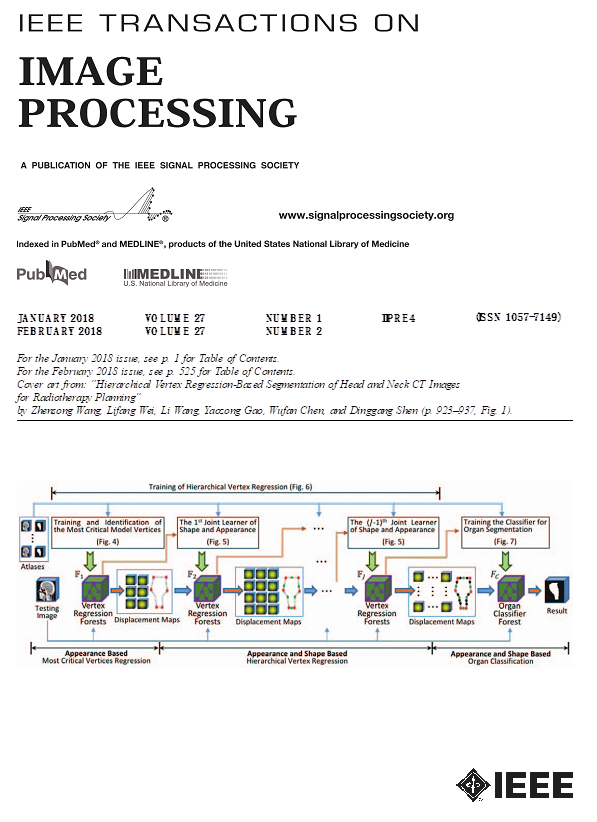基于医学影像的脑网络分析的时空演化图学习。
IF 13.7
1区 计算机科学
Q1 COMPUTER SCIENCE, ARTIFICIAL INTELLIGENCE
引用次数: 0
摘要
动态脑功能网络(DFBN)可以灵活地描述大脑时变的拓扑连接模式,在脑部疾病诊断中显示出巨大的潜力。然而,现有的DFBN分析方法大多侧重于捕捉脑区水平的动态相互作用,忽略了跨时间窗口的时空拓扑演变。此外,它们很难抑制dfbn中的干扰连接,这导致识别与脑部疾病密切相关的内在结构的能力下降。为了解决这些问题,我们提出了一种拓扑进化图学习模型来捕获dfbn中与疾病相关的时空拓扑特征。具体而言,我们首先将相邻DFBN的hub分别作为源域和目标域,然后利用Wasserstein距离(WD)和Gromov-Wasserstein距离(GWD)分别在节点和边缘水平捕捉大脑的进化规律。此外,我们引入了相关信息原理来引导拓扑进化图,以学习与脑疾病最相关的结构,而相邻dfbn之间的冗余信息最少。在此基础上,提出了一种基于多跳图卷积的高阶时空模型,从拓扑进化图中协同提取远程时空依赖关系。大量实验表明,该方法优于现有的方法,可以有效地揭示跨窗口脑区之间的信息演化机制。本文章由计算机程序翻译,如有差异,请以英文原文为准。
Spatio-Temporal Evolutionary Graph Learning for Brain Network Analysis using Medical Imaging.
Dynamic functional brain network (DFBN) can flexibly describe the time-varying topological connectivity patterns of the brain, and show great potential in brain disease diagnosis. However, most of the existing DFBN analysis methods focus on capturing the dynamic interaction at the brain region level, ignoring the spatio-temporal topological evolution across time windows. Moreover, they are difficult to suppress interfering connections in DFBNs, which leads to a diminished capacity for discerning the intrinsic structures that are intimately linked to brain disorders. To address these issues, we propose a topological evolution graph learning model to capture disease-related spatio-temporal topological features in DFBNs. Specifically, we first take the hubness of adjacent DFBN as the source domain and the target domain in turn, and then use Wasserstein distance (WD) and Gromov-Wasserstein distance (GWD) to capture the brain's evolution law at the node and edge levels, respectively. Furthermore, we introduce the principle of relevant information to guide the topology evolution graph to learn the structures that are most relevant to brain diseases yet least redundant information between adjacent DFBNs. On this basis, we develop a high-order spatio-temporal model with multi-hop graph convolution to collaboratively extract long-range spatial and temporal dependencies from the topological evolution graph. Extensive experiments show that the proposed method outperforms the current state-of-the-art methods, and can effectively reveal the information evolution mechanism between brain regions across windows.
求助全文
通过发布文献求助,成功后即可免费获取论文全文。
去求助
来源期刊

IEEE Transactions on Image Processing
工程技术-工程:电子与电气
CiteScore
20.90
自引率
6.60%
发文量
774
审稿时长
7.6 months
期刊介绍:
The IEEE Transactions on Image Processing delves into groundbreaking theories, algorithms, and structures concerning the generation, acquisition, manipulation, transmission, scrutiny, and presentation of images, video, and multidimensional signals across diverse applications. Topics span mathematical, statistical, and perceptual aspects, encompassing modeling, representation, formation, coding, filtering, enhancement, restoration, rendering, halftoning, search, and analysis of images, video, and multidimensional signals. Pertinent applications range from image and video communications to electronic imaging, biomedical imaging, image and video systems, and remote sensing.
 求助内容:
求助内容: 应助结果提醒方式:
应助结果提醒方式:


